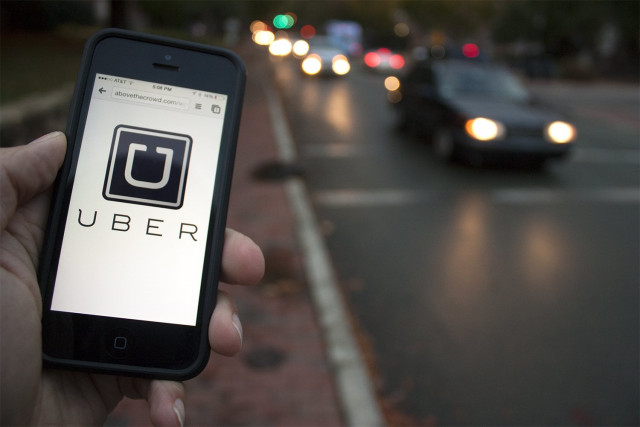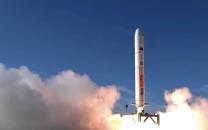Uber lays out vision for flying commuter transit
Auto-pilot capabilities could be built into the aircraft to reduce the potential for human mistakes

The logo of car-sharing service app Uber PHOTO: AFP
The ride-sharing giant assessed the feasibility of what it called "vertical take-off and landing" vehicles in a 98-page white paper, inviting innovators and entrepreneurs to take flight with the idea. San Francisco-based Uber said it will be reaching out to cities, manufacturers and others about the concept.
Uber launches rickshaw service in Pakistan
"Just as skyscrapers allowed cities to use limited land more efficiently, urban air transportation will use three-dimensional airspace to alleviate transportation congestion on the ground," said the white paper, authored by Uber chief product officer Jeff Holden and product manager Nikhil Goel.
"A network of small, electric aircraft that take off and land vertically will enable rapid, reliable transportation between suburbs and cities and, ultimately, within cities."
Diagrams in the paper showed aircraft bodies of various designs with propellers that can rotate to allow for vertical lift-off or landing, then move into position for flying forward. Recent advances in technology have made it practical to build "vertical take-off and landing," or VTOL, vehicles, according to the paper.
More than a dozen companies taking varied design approaches are working on these types of aircraft, according to the Uber team. Since VTOL aircraft would be powered by electricity, they would be non-polluting and quiet, the paper said.
Auto-pilot capabilities could be built into the aircraft to reduce the potential for human mistakes, and they could recharge at landing pads atop buildings, at existing helipads, or at stations built on unused land, according to the vision presented in the paper. However, challenges include making the aircraft affordable and reliable, training pilots, getting the approval of regulators, and making lightweight batteries.
Uber plans Uber Everything for India
"The greatest operational barrier to deploying a VTOL fleet in cities is a lack of sufficient locations to place landing pads," Holden said.
"Even if VTOLs were certified to fly today, cities simply don't have the necessary takeoff and landing sites for the vehicles to operate at fleet scale."



















COMMENTS
Comments are moderated and generally will be posted if they are on-topic and not abusive.
For more information, please see our Comments FAQ